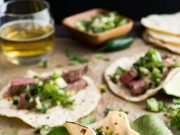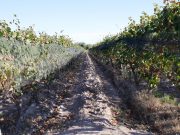
Find a cider house.
Cider houses, or sagardotegi, pack with locals and several in-the-know travelers eager for a flavor of your year’s cider. Conversations at cider houses are periodically punctuated with yells of ”txotx” (pronounced “choach”) because tap of any 3,000-plus-gallon barrel is opened and folks line up capture his or her drink from the spout. It’s a convention unlike other the other to be on everyone’s travel to-do list.


The cider capital of Spanish Basque Country would be the 6,000-person town of San Sebastián. There are 19 cider houses near the area, each serving cider in usually same manner: The tap is opened, as well as a type of people forms capture a glass. The initial person places their glass within the stream of cider coming from the barrel, as well as person behind positions their glass just underneath hence the stream shoots into their glass as soon as the first individual is done. This continues till the line ends, with lots of food served throughout.


Partake in a thousand years old tradition.
The San Sebastián Tourism Board states that “Proof exists for the effect that this Basques are actually acquainted with both apples and cider for hundreds of years.” Other region-specific sources remember that the very first record of apple production in the Basque region was a student in 1014. No matter whose history you opt to believe, the Basque cider tradition is many centuries from the making.
In the first years, gatherings at cider houses were for folks who would later pick the cider in big amounts. Buyers would look at the cider houses to taste from the various barrels, called kupelas, and decide which cider they wanted. Each barrel is slightly different dependant upon the apples added too but all are naturally fermented, very lightly carbonated, and tart. Basque cider can be funky tasting having an earthy, straw-like flavor. The flavour description is, helping put it lightly, off-putting for any individual expecting what passes for cider in America. Peter Yi, the owner of the Basque-inspired Brooklyn Cider House, describes the design best as “the variety of the many flavors that need patience and dedication to learn.” It might be challenging itself, nonetheless it shines when followed by food.


Enjoy it with a hearty meal.
As long since there have been Basque cider houses, we have seen Basque cider-house food. Drinking on an empty stomach doesn’t result in the best purchasing decisions, in the end, and that’s what cider buyers were there to accomplish. Basque cider is reduced alcohol (usually around 5 %), but surely you will find stories available of some hapless soul who went along to find the year’s cider for his tavern before eating anything, hit the cider stream one too many times, and using the incorrect order.
Food isn’t simply precaution for the sagardotegis, though; it’s a delicacy. The Basque region has more Michelin-star restaurants per capita than from any location. Menus at cider houses are more rustic but truth be told delightful. Salted cod, omelettes, steak, local Idiazabal cheese, jelly, and walnuts are traditionally served. People stand or spend long communal tables to eat, leaving their plates and then go catch more cider within their glass.


“While i tried ciders in the past, that it was simply the cider along without worrying about food,” Yi, who spent 25 years like a wine buyer before opening Brooklyn Cider House, says. “It wasn’t easy for me. But once I had put together it with food, it all made sense: It’s intended to be consumed with food. That is in the event the thunderbolt went off, and this moment just absolutely changed my own on cider.”
The taste and traditions of Basque cider are unlike other things when you are the hang of catching it and acclimate for their unique flavors.
“Once you know this cider, there’s no returning,” Yi says. “The cider is virtually to be an abstract painting. You can’t go head on on this cider and are aware of it immediately.”


Learn the right way to catch and drink Basque cider.
The food and convivial atmosphere are amazing, but cider houses are about cider. Because of this when you are, you ought to know how to get said cider within your glass the right way.
First things first: stand it line. It might resemble an unorganized mass, but there’s a pecking order. When it’s your turn, approach the stream of cider in the side so they won\’t comprehend it on yourself. Place your glass beneath glass of the person prior to and stick to. You choose the cider hitting the medial side and splash in — it’s Appropriate for some to fall towards floor. The cider’s natural carbonation ensures that it\’s only a few bubbles, if any in anyway. Catching getting it spurts from the barrel aerates it and provides it some life.
It’s essential to limit the amount cider you catch. It tastes best when freshly poured in small doses. (Don’t worry, there are several opportunity to get into gear and check more.)


Know how to drink Basque cider.
San Sebastián will be the first stop for those wishing to experience traditional Basque cider. There are numerous cider houses this brief 30-minute drive with the town, and also places accessible by taxi and trains and buses. A lot of the popular sagardotegis are Zapiain, Petritegi, and Zelaia. Reservations are suggested but is not required. To be able to map out your cider trip best, though, investigate Sagardoa Route, that provides facts about 59 cider houses, trips and guided tours, and various cider-related events and Basque cultural experiences.


If you can’t help it become over to Spain, Brooklyn Cider House’s 12,000-square-foot cidery and restaurant in the Bushwick neighborhood of Brooklyn gives a taste of sagardotegis using apples grown in New york city state.
































